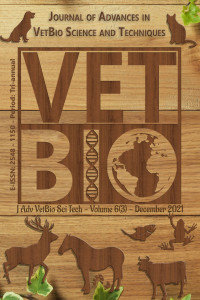Abstract
Astaxanthin, a natural antioxidant, is a carotenoid widely used in aquaculture, in the production of trout and shellfish to provide the pink color of meat. Although this application has been used for over thirty years since the nineties, it is one of the most important pigments for food colouring industry today. Additionally, astaxanthin plays an important role in improving egg and sperm quality in fish reproductive processes. The world market is dominated by the use of synthetic astaxanthin, besides, interest in natural sources of the pigment has grown considerably recently. The most common sources of natural astaxanthin are the green algae Haematococcus pluvialis, the red yeast Phaffia rhodozyma, as well as crustacean byproducts. Astaxanthin is an antioxidant that has increased demand in the nutraceutical market as an encapsulated product. In addition, the consumption of astaxanthin has many health benefits, such as the prevention of cardiovascular diseases, strengthening the immune system, bioactivity against Helycobacter pylori, and prevention of cataracts. This article reviews the available evidence on astaxanthin chemistry and its potential beneficial effects on living things
Keywords
References
- Ambati, R. R., Phang, S. M., Ravi, S., & Aswathanarayana, R. G. (2014). Astaxanthin: sources, extraction, stability, biological activities and its commercial applications—a review. Marine drugs, 12(1), 128-152.
- Augusti, P. R., Quatrin, A., Somacal, S., Conterato, G. M., Sobieski, R., Ruviaro, A. R., ... & Emanuelli, T. (2012). Astaxanthin prevents changes in the activities of thioredoxin reductase and paraoxonase in hypercholesterolemic rabbits. Journal of clinical biochemistry and nutrition, 11-74.
- Chew, B. P., Park, J. S., Wong, M. W., & Wong, T. S. (1999). A comparison of the anticancer activities of dietary beta-carotene, canthaxanthin and astaxanthin in mice in vivo. Anticancer research, 19(3A), 1849-1853.
- Chew, B. P., & Park, J. S. (2004). Carotenoid action on the immune response. The Journal of nutrition, 134(1), 257S-261S.
- Choi, S., & Koo, S. (2005). Efficient syntheses of the keto-carotenoids canthaxanthin, astaxanthin, and astacene. The Journal of Organic Chemistry, 70(8), 3328-3331.
- Daubrawa, F., Sies, H., & Stahl, W. (2005). Astaxanthin diminishes gap junctional intercellular communication in primary human fibroblasts. The Journal of nutrition, 135(11), 2507-2511.
- D’Orazio, N.; Gammone, M.A.; Gemello, E.; DeGirolamo, M.; Cusenza, S.; Riccioni, G. Marine bioactives: Pharmacological properties and potential applications against inflammatory diseases. Mar. Drugs 2012, 10, 812–833.
- EFSA (Avrupa Gıda Güvenliği Otoritesi) (2005). Hayvanların beslenmesinde renklendirici ajanların güvenliğine ilişkin Avrupa komisyonunun talebi üzerine, hayvan yemlerinde kullanılan katkı maddeleri ve ürünler veya maddeler hakkındaki bilimsel panel görüşü. EFSA J.; 291 : 1–40.
- Fassett, R. G., & Coombes, J. S. (2011). Astaxanthin: a potential therapeutic agent in cardiovascular disease. Marine drugs, 9(3), 447-465.
- Gammone, M. A., Riccioni, G., & D'Orazio, N. (2015). Marine carotenoids against oxidative stress: effects on human health. Marine Drugs, 13(10), 6226-6246.
Abstract
Doğal bir antioksidan olan Astaksantin Su ürünleri yetiştiriciliğinde, ete pembe renk özelliğini sağlamak için alabalık ve kabuklu su ürünleri üretiminde yaygın olarak kullanılan bir karotenoiddir. Bu uygulama doksanlı yıllardan bu yana otuz yılı aşkın bir süredir kullanılmakla birlikte günümüzde piyasa için en önemli pigmentlerden biridir. Ek olarak, astaksantin balıkların üreme süreçlerinde yumurta ve sperm kalitesinin artmasında önemli bir rol oynar. Dünya pazarına ağırlıklı olarak sentetik astaksantin kullanımı hâkimdir, bunun yanı sıra pigmentin doğal kaynaklarına ilgi son zamanlarda büyük ölçüde artmıştır. Doğal astaksantinin en yaygın kaynakları kabuklu yan ürünlerinin yanı sıra yeşil alglerden Haematococcus pluvialis, kırmızı maya Phaffia rhodozyma’dır. Astaksantin, kapsüllenmiş ürün olarak nutrasötik pazarında talep artışına sahip olan bir antioksidandır. Ayrıca, astaksantinin tüketiminin kardiyovasküler hastalıkların önlenmesi, bağışıklık sisteminin güçlendirilmesi, Helycobacter pylori'ye karşı biyoaktivite ve kataraktın önlenmesi gibi birçok sağlık yararları vardır. Bu makale, astaksantin kimyası ve canlılar üzerine potansiyel yararlı etkileri ile ilgili mevcut kanıtları gözden geçirmektedir.
Keywords
References
- Ambati, R. R., Phang, S. M., Ravi, S., & Aswathanarayana, R. G. (2014). Astaxanthin: sources, extraction, stability, biological activities and its commercial applications—a review. Marine drugs, 12(1), 128-152.
- Augusti, P. R., Quatrin, A., Somacal, S., Conterato, G. M., Sobieski, R., Ruviaro, A. R., ... & Emanuelli, T. (2012). Astaxanthin prevents changes in the activities of thioredoxin reductase and paraoxonase in hypercholesterolemic rabbits. Journal of clinical biochemistry and nutrition, 11-74.
- Chew, B. P., Park, J. S., Wong, M. W., & Wong, T. S. (1999). A comparison of the anticancer activities of dietary beta-carotene, canthaxanthin and astaxanthin in mice in vivo. Anticancer research, 19(3A), 1849-1853.
- Chew, B. P., & Park, J. S. (2004). Carotenoid action on the immune response. The Journal of nutrition, 134(1), 257S-261S.
- Choi, S., & Koo, S. (2005). Efficient syntheses of the keto-carotenoids canthaxanthin, astaxanthin, and astacene. The Journal of Organic Chemistry, 70(8), 3328-3331.
- Daubrawa, F., Sies, H., & Stahl, W. (2005). Astaxanthin diminishes gap junctional intercellular communication in primary human fibroblasts. The Journal of nutrition, 135(11), 2507-2511.
- D’Orazio, N.; Gammone, M.A.; Gemello, E.; DeGirolamo, M.; Cusenza, S.; Riccioni, G. Marine bioactives: Pharmacological properties and potential applications against inflammatory diseases. Mar. Drugs 2012, 10, 812–833.
- EFSA (Avrupa Gıda Güvenliği Otoritesi) (2005). Hayvanların beslenmesinde renklendirici ajanların güvenliğine ilişkin Avrupa komisyonunun talebi üzerine, hayvan yemlerinde kullanılan katkı maddeleri ve ürünler veya maddeler hakkındaki bilimsel panel görüşü. EFSA J.; 291 : 1–40.
- Fassett, R. G., & Coombes, J. S. (2011). Astaxanthin: a potential therapeutic agent in cardiovascular disease. Marine drugs, 9(3), 447-465.
- Gammone, M. A., Riccioni, G., & D'Orazio, N. (2015). Marine carotenoids against oxidative stress: effects on human health. Marine Drugs, 13(10), 6226-6246.
Details
| Primary Language | Turkish |
|---|---|
| Subjects | Food Engineering |
| Journal Section | Erratum |
| Authors | |
| Publication Date | December 31, 2021 |
| Submission Date | June 28, 2021 |
| Acceptance Date | December 7, 2021 |
| Published in Issue | Year 2021 Volume: 6 Issue: 3 |



